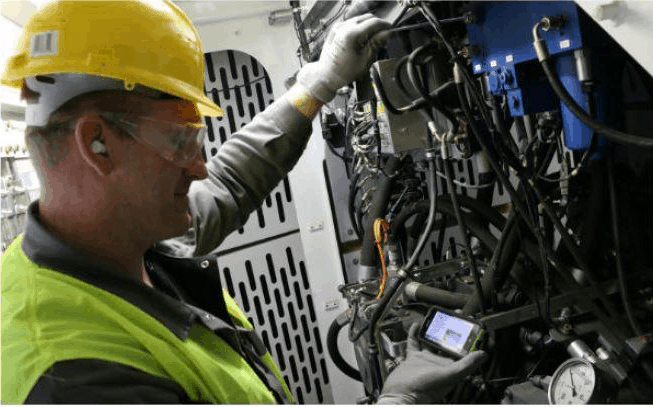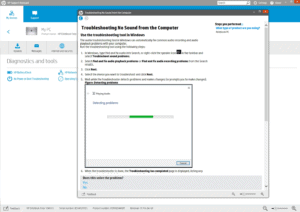Making the right knowledge available for the right people at the right time is essential for all organizations that aspire to create and distribute a knowledge base to multiple channels in various languages across products and services and target user skill levels.
Let’s break that down a bit:
- The right knowledge
- For the right people
- At the right time
The right knowledge
Customers, technicians, partners, and resellers all need access to your knowledge base to learn about installation, commissioning, service & maintenance, operating instructions, unscheduled troubleshooting, and many other tasks that span the lifetime of complex products.
However, they all need different types of knowledge in different ways. Installation and commissioning require strong fixed guidance that takes the user through a series of carefully crafted steps, making sure everything is performed according to specifications – strong procedural information.
End users need operating instructions, service manuals, and basic help and support information that will help them use their products and fix the most common issues that inevitably occur.
Call center agents and field service technicians require strong technical support documentation that will assist them when answering support calls or when fixing problems on-site.
Everybody needs the exact piece of knowledge content that will enable them to solve the issue at hand as quickly and as efficiently as possible.
The right knowledge also infers both explicit and tacit knowledge, as both are needed when servicing a product or fixing a breakdown. The best knowledge bases contains both formal documentation from the documentation department and “know-how” from the field and make both types available to the user in an easily consumable way.
For the right people
Since so many people are involved in a product throughout its lifetime, the right type of knowledge must be made available to the right people. We can capture knowledge in a computer, but if we don’t make sure that the knowledge gets to the correct person, there will be little value in it for the people requiring it. Consumers shouldn’t see blueprints or electrical diagrams for their consumer products, contact center agents don’t need to see assembly instructions for advanced industrial equipment, and field service technicians don’t need to see the documentation for products that they do not work with.
Likewise, partners, resellers, and affiliates need access to service instructions, service manuals, and trouble shooting info. Still, we might not want to provide them unlimited access to all of our knowledge base for various reasons – technical, political, or financial reasons.
At the right time
A knowledge base containing all the documentation for all the right people gets really valuable when it can serve up knowledge at the right time.
When an agent receives a call in the call center, the knowledge base application should be able to automatically switch to the right section of the knowledge base relevant to that particular customer’s issue, making sure the agent doesn’t spend valuable seconds on browsing or searching through endless topics to get to the right article.
When an error occurs in a wind turbine, the contact center application should automatically bring up troubleshooting guides for that particular turbine in that specific version and configuration – every minute a turbine is not spinning, it costs its owner massive amounts of money, so the application needs to find the right knowledge very quickly.
In the field, a technician needs instant access to product-specific knowledge as soon as he unpacks and starts investigating the issue.
Using state data
Taking it a step further, the application should utilize IoT to consume product state data and provide context-sensitive corrective actions based on the situation’s particulars. Every machine is different based on environment and operator and using state data can be an extremely powerful tool that can save the technician a lot of time and increase precision and first time right significantly as he gets exactly the knowledge presented that is relevant in the current situation.
Finally, the knowledge base application should be mobile friendly as technicians, in many cases, don’t have a place to place a laptop close to the working space physically – a mobile phone or tablet computer is easily placed and is very easy to use and helps the technician get started as quickly as possible.

Outsourced service and contractor support
Some companies outsource service and maintenance but also want to ensure that the outsourced service center provides the best service possible for the customers to make sure they stick around and are happy. On top of that, there are economic advantages to offering affiliates paid access to a high-quality knowledge base.
Another consideration is contractor support. Many vendors of complex industrial products like wind turbines, excavators, food tech, and others often hire contractors for assembly and commissioning and if the contractor doesn’t perform the assembly properly, the machines start performing inadequately very quickly, and the customers start seeing unscheduled maintenance too soon.
Suppose we provide the contractors with the right assembly knowledge served in manageable slices of content. In that case, the people putting together that machine will be more likely to correctly do the job as expected and not just put things together as they are used to – old habits can hurt productivity resulting in unhappy customers and eventually churn.
Integration into 3rd party apps
Making the right knowledge available to everyone everywhere at any time is not only the responsibility of the native user interface of the knowledge base application. Many enterprises develop and maintain their own proprietary software tools capable of providing users with many options and data useful in many situations. We see both tools for internal usage in call centers and service technicians on site but also customer self-service and deep integration into such products are mandatory in an API economy.
Offline capabilities
The right knowledge at the right time also relates to the user accessing the system in remote and rural areas where an internet connection is not easily available. Technicians supporting products operating in wind turbine farms, mining sites, forest and farming environments, and the likes are rarely able to connect to the internet, let alone the corporate network for accessing online services. In these disconnected cases, strong offline capabilities are a huge benefit as the users are still able to get the required knowledge.
—
There are a lot of considerations that go into building a true multi-channel, cross-product, and service knowledge base. Still, a great knowledge base contains information for all the cases mentioned in this article (and many others). It ensures that the right people get the knowledge they need by offering easily consumable organized context sensitive expert knowledge exactly when they need it.



